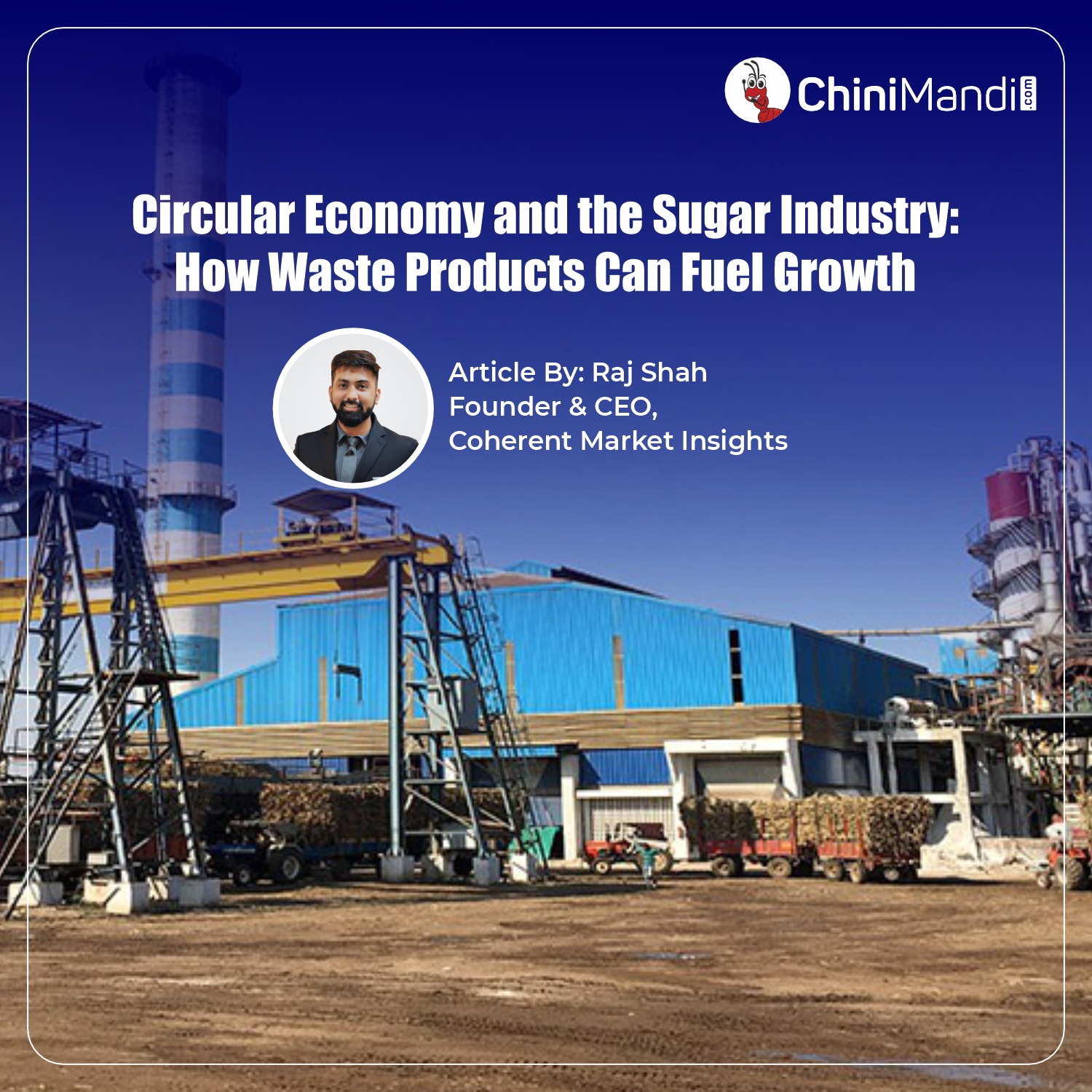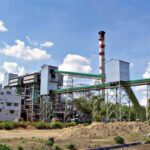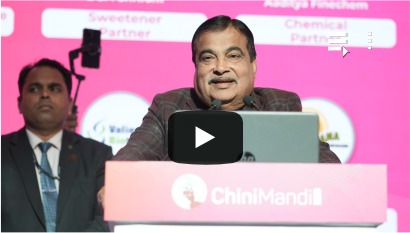In recent years, the sugar industry has encountered a variety of obstacles, including price volatility, fluctuating yields, and environmental concerns. However, these obstacles have also facilitated the development of innovation and transformation. The implementation of circular economy principles, which prioritize resource reuse and minimize pollution, provides a pathway to not only mitigate environmental impact but also improve economic viability. The sugar industry can enhance its sustainability and profitability by converting by-products such as bagasse, molasses, and press sludge into valuable resources.
According to a report by Coherent Market Insights, India’s sugar industry is a fundamental component of its agrarian economy, with over 525 mills annually generating more than 30 million tonnes of sugar. This establishes India as the world’s largest producer and consumer of sugar. The sector’s importance is not limited to production; it encompasses a vast network of over 50 million farmers and millions more laborers who are involved in sugarcane farming.
Innovative Waste Valorization: Emerging Technologies and Methods
Several innovative methods for valorizing sugar industry refuse have been introduced in recent advancements. Utilizing press dirt and bagasse to produce biofuels and electricity. Molasses is transformed into ethanol, xylitol, and other compounds. Converting press mud into organic fertilizers. Utilizing spent wash in the production of biogas and other treatments.
These technologies not only reduce waste but also provide opportunities for energy self-sufficiency and additional revenue streams.
India’s Export Potential of Ethanol and Xylitol: India has significant potential to increase its ethanol export, especially with the growing global demand for renewable energy sources. As ethanol is increasingly used as a biofuel and in industrial applications (including pharmaceuticals, cosmetics, and food), India’s abundant sugarcane production can provide a steady supply for export. The government’s push for blending ethanol with petrol (ethanol blending programme) is expected to enhance domestic production, and excess ethanol can be exported to countries where demand is growing, especially in Europe and the U.S. Additionally, xylitol, a sugar alcohol derived from sugar industry waste (especially from the fibrous material of sugarcane), has gained popularity in the food and pharmaceutical industries due to its low glycemic index and as a sugar substitute. India, being one of the largest producers of sugar, is well-positioned to process its sugar industry waste to produce xylitol. However, to boost export potential, India would need to scale up production capacities and improve supply chain efficiency to ensure quality and consistency in its exportable products.
Sugar Industry’s Ethanol Production and India’s NDC Commitments: The sugar industry’s ethanol production plays an essential role in meeting India’s Nationally Determined Contributions (NDCs) under the Paris Agreement. By increasing ethanol blending with petrol, the sugar industry is contributing to India’s renewable energy goals and lowering dependence on fossil fuels. This shift helps India reduce carbon emissions from the transportation sector and boosts energy independence by utilizing domestic biofuels. As a renewable energy source, ethanol produced from sugarcane supports India’s long-term sustainability objectives while providing economic benefits to farmers and millers.
Government Policies and Support
The Indian government has acknowledged the significance of sustainable practices in the sugar industry and has therefore implemented a number of policies to facilitate this transition.
The financial stability and sustainable agricultural practices of farmers are promoted by the introduction of the Fair and Remunerative Price (FRP) system, which guarantees that they receive a fair price for their sugarcane.
Financial incentives have been provided by the government to promote the production of ethanol, particularly from molasses, a critical byproduct of sugar production. Sugar mills have been able to diversify their revenue streams and contribute to India’s renewable energy objectives as a result of this support. The demand for molasses-based ethanol has been considerably increased as a result of the promotion of ethanol blending in petrol. This has also prompted mills to adopt more sustainable waste utilization methods.
Furthermore, a variety of soft financing programs have been implemented to aid sugar mills in the establishment of bioenergy units and biorefineries. The capital required for mills to invest in sustainable technologies, including advanced ethanol distillation facilities, biogas production, and waste-to-energy plants, is provided by these schemes. The government’s objective is to establish an ecosystem that enables sugar mills to generate renewable energy and reduce waste, thereby solidifying the industry’s sustainability credentials. This will be achieved through the implementation of these measures.
Additionally, the government has implemented state-level initiatives that are designed to encourage the development of waste-to-energy technologies. These initiatives are specifically concentrated on the conversion of sugarcane by-products, including bagasse and press mud, into bioenergy. These programs provide mills with financial incentives, tax breaks, and subsidies to encourage their investment in renewable energy technologies, thereby facilitating their transition to more environmentally friendly operations. The National Bioenergy Mission and initiatives under the Pradhan Mantri Kisan Urja Suraksha Evam Utthaan Mahabhiyan (PM KUSUM) in India further support these endeavors by promoting the adoption of solar and wind-based energy solutions by farmers and mills. The government ensures that the sugar industry not only contributes to the national renewable energy targets but also advances towards sustainability by promoting such alternative energy solutions. Furthermore, the sugar industry’s transition to a circular economy is indirectly supported by the Swachh Bharat Mission and a variety of initiatives that prioritize water conservation and waste management. These initiatives promote the responsible disposal of waste and the use of recycled water, thereby guaranteeing that by-products such as spent wash and press mud are managed and utilized in an environmentally responsible manner.
The Future of the Indian Situation
India’s sugar industry is on the brink of substantial expansion in the future. The 2025–26 season is anticipated to experience a 15% increase in sugar output, reaching 35 million tonnes, as a result of expanded sugarcane cultivation and favorable weather conditions, according to a report by Coherent Market Insights. This increase in production offers an opportunity to further incorporate circular economy practices. The industry can contribute to renewable energy objectives, reduce waste, and increase the value of by-products by investing in sophisticated technologies and infrastructure. In order to accomplish these objectives, it will be essential to foster collaboration among the government, private sector, and producers. The sugar industry will be able to flourish in a global market that is becoming increasingly eco-conscious as a result of ongoing policy support, innovation, and sustainable practices.
How Sugar Mills Are Evolving into Biorefineries: Traditional sugar mills are evolving into biorefineries by utilizing not just sugarcane but also by-products such as bagasse, molasses, and filter cake. These by-products can be converted into a wide range of valuable bio-based products, including ethanol, biogas, and bioplastics. By integrating the production of biofuels, biochemicals, and other green energy solutions, sugar mills are improving their sustainability profiles. The by-products like bagasse are being used to generate green power, which can be sold back to the grid. This transition is particularly attractive in the context of circular economy principles, where waste from one process becomes raw material for another. In addition, by diversifying into biorefineries, sugar mills can weather market fluctuations in the sugar industry by generating multiple revenue streams, such as from bioelectricity, green chemicals, and higher-value bio-based products.
In conclusion, the sugar industry in India is currently at a critical juncture. It has the potential to convert challenges into opportunities by adopting circular economy principles and capitalizing on technological advancements. The industry can not only improve its economic viability but also contribute to energy sustainability and environmental conservation by implementing sustainable practices. Collaboration, innovation, and a dedication to sustainability are the keys to ensuring that the sugar industry remains a fundamental component of India’s economy for future generations.
Raj Shah is the Founder & CEO of Coherent Market Insights

















[…] Source : Chinimandi […]